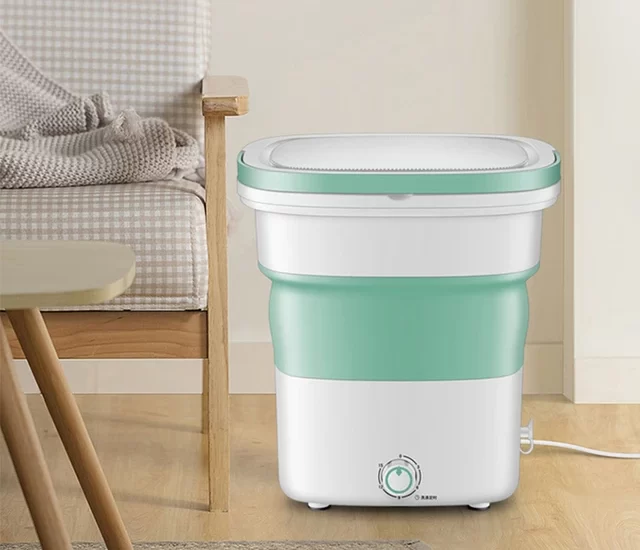 Introduction:
Introduction:
Washing heavy blankets can be a daunting task, especially if you’re unsure of the proper method. However, with the right techniques, it is possible to clean your heavy blankets effectively in a washing machine. In this comprehensive guide, we will provide a step-by-step approach to help you wash heavy blankets in a Washing Machine with ease. By following these simple steps, you can maintain the cleanliness and freshness of your heavy blankets, keeping them cozy and comfortable for years to come.
 Here are the common types of washing machines:
Here are the common types of washing machines:
There are several types of washing machines available, each with its unique features and advantages. Here are the common types of washing machines:
Top-Loading Washing Machine:
These machines have a lid on the top, and clothes are loaded vertically into the tub. They are known for their ease of use as you can add clothes during the wash cycle. Top-loading machines are generally more affordable and have a shorter wash cycle compared to front-loading machines.
Front-Loading Washing Machine:
Front-loading machines have a door on the front, and clothes are loaded horizontally into the drum. They are known for their energy efficiency, as they use less water and detergent compared to top-loading machines. Front-loading machines are generally larger in capacity and provide superior cleaning performance. They are also considered gentler on clothes.
High-Efficiency (HE) Washing Machine:
HE washing machines are designed to be energy-efficient and use less water and electricity compared to traditional machines. They have specific programming options and require the use of HE detergent. Both top-loading and front-loading machines can be HE machines.
Compact Washing Machine:
Compact washing machines are smaller in size and are suitable for small spaces such as apartments, RVs, or small laundry rooms. They generally have a smaller capacity but provide efficient washing functionality.
Portable Washing Machine:
Portable washing machines are lightweight and easy to move around. They are suitable for individuals without access to a traditional washer and for camping or traveling purposes. Portable washing machines are often smaller in capacity and can be manually filled with water.
Washer-Dryer Combo:
Washer-dryer combo machines combine the features of both washing and drying into a single unit. They are space-saving as they eliminate the need for a separate dryer. Washer-dryer combos are suitable for smaller spaces where separate machines are not practical.
It is essential to consider factors like budget, available space, capacity, energy efficiency, and personal preferences when choosing a washing machine that suits your needs.
 Preparing for the Washing Process
Preparing for the Washing Process
Check the Care Instructions:
Read the care label on your heavy blankets to determine if they are machine washable.
Pay attention to any specific instructions, such as recommended water temperature or cycle settings.
Inspect for Damage or Stains:
Examine your heavy blankets for any visible damage, such as rips or tears.
Spot treat any stains or heavily soiled areas before washing to maximize cleaning effectiveness.
Gather Necessary Supplies:
Ensure you have appropriate laundry detergent, preferably one that is suitable for heavy fabrics and sensitive skin.
Depending on the size and weight of your blanket, you may need a large-capacity washing machine or consider using a laundromat.
 Washing Your Heavy Blankets
Washing Your Heavy Blankets
Load the Washing Machine:
Place your heavy blankets into the washing machine, ensuring they are evenly distributed.
Avoid tightly packing the machine to allow for proper agitation and water circulation.
Select the Appropriate Cycle:
Choose a gentle or delicate cycle on your washing machine, as heavy blankets require a more gentle approach.
Avoid using harsh agitation or high-speed spin cycles, as they can damage the fabric or create unnecessary stress on the machine.
Add Detergent:
Follow the manufacturer’s instructions on the detergent packaging to determine the appropriate amount for your load.
Use a gentle detergent suitable for heavy fabrics to avoid any potential damage or fading.
Drying Your Heavy Blankets
Check the Care Label for Drying Instructions:
Refer to the care label on your heavy blankets to determine if they can be tumble dried or if air drying is recommended.
Some heavy blankets may require line drying to prevent shrinkage or misshaping.
Tumble Drying:
If recommended, place your heavy blankets in the dryer and use the heat setting recommended on the care label.
Consider using a tennis ball or dryer balls to help fluff and evenly distribute the filling or fibers inside the blanket.
Air Drying:
If air drying is recommended, find a suitable location to hang your heavy blankets, such as a clothesline or drying rack.
Ensure proper airflow and avoid drying the blankets in direct sunlight to prevent potential fading or damage.
Additional Considerations
Professional Cleaning:
For particularly large or delicate heavy blankets, or if you prefer professional assistance, consider having them cleaned by a professional dry cleaner.
Professional cleaners have the expertise and equipment to handle heavy blankets effectively and safely.
Regular Maintenance:
To prolong the lifespan of your heavy blankets, follow a regular cleaning schedule.
Cleaning them every few months or as needed will help maintain their freshness and extend their usability.
Storing Heavy Blankets:
If you need to store your heavy blankets, ensure they are clean and fully dry before folding and storing them in a cool and dry place.
Avoid storing heavy blankets in plastic bags, as this can lead to moisture retention and potential mildew growth.
If your washing machine is not spinning after attempting to wash a thick blanket
If your washing machine is not spinning after attempting to wash a thick blanket, here are some potential solutions:
Check the load size:
Ensure that the blanket is not exceeding the maximum load capacity of your washing machine. Overloading the machine can strain its motor and prevent it from spinning properly. Consider washing larger or thicker items in a commercial-sized or heavy-duty washing machine.
Balance the load:
If the blanket’s weight is unevenly distributed within the drum, it can affect the spin cycle. Open the washing machine and adjust the blanket, ensuring it is evenly spread out to achieve a balanced load. If necessary, add some additional items to balance the load.
Remove excess water:
A thick blanket can absorb a significant amount of water, which can overwhelm the washing machine’s drainage system. Prior to the spin cycle, manually wring out or squeeze any excess water from the blanket to lighten the load and facilitate the spinning process.
Select the appropriate cycle:
Some washing machines have specific cycles designed for heavier items or bulky fabrics. Check the user manual or the washing machine’s settings to identify any specialized cycles that may be suitable for washing thick blankets. Using the correct cycle can ensure effective cleaning and spinning.
Reset the machine:
If the washing machine becomes overloaded or encounters difficulties during the spin cycle, it may automatically shut down to prevent damage. In this case, unplug the machine from the power source for a few minutes to reset it. Afterward, try running a spin-only cycle or restart the washing process.
Seek professional help:
If the issue persists or if you suspect a mechanical problem, it is recommended to contact a professional technician or the manufacturer’s customer service for assistance. They can diagnose and resolve any underlying mechanical or technical issues that may be preventing the machine from spinning.
Remember to always follow the manufacturer’s guidelines for using your washing machine and consult the user manual for specific instructions or troubleshooting recommendations.
 Conclusion:
Conclusion:
Washing heavy blankets in a washing machine can be a simple and effective process if done correctly. By following the step-by-step guide outlined in this article, you can ensure a thorough cleaning while maintaining the integrity of your heavy blankets. Remember to check the care label, select appropriate cycles and detergents, and follow recommended drying methods. Regular maintenance and proper storage will help preserve the quality and functionality of your heavy blankets for years of cozy warmth.





